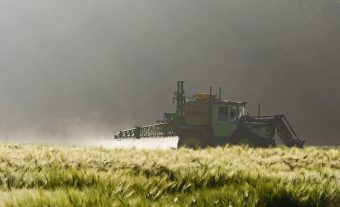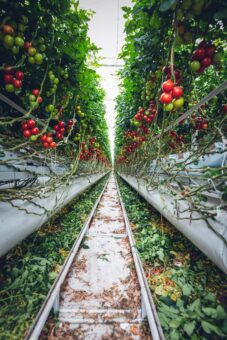
How do you imagine the world in 2050? Flying cars? Robots that help us with housework? With all that sophisticated technology, life will certainly be nice for a small part of the world’s population. Still, the chances are high that billions of people will fight something that has plagued humanity for centuries – hunger.
Experts estimate that in 2050, the planet will be inhabited by 9.1 billion people, so farmers will have to produce 70 per cent more food than today. This seems almost impossible with the current climatic conditions, as the intensity of floods, droughts, and other weather disasters increases yearly.
Climate change is the biggest threat to food production today, and the fight against this enemy of our own making is being waged on many fronts. Regarding agriculture, food production must reduce greenhouse gas emissions because food systems are responsible for 30 per cent of global emissions. On the other hand, farmers need to adapt to harsh and unpredictable weather conditions to minimize losses.
Fortunately, technology has advanced, and farmers today have artificial intelligence, robotics, and gene manipulation to help maintain and improve production.
Himanshu Gupta, one of the most prominent entrepreneurs in the field of climate change, has experienced firsthand what it’s like to run out of food. According to the World Economic Forum, Gupta’s grandmother often mixed milk with water to feed her family of 16 members.
This Indian-American entrepreneur is now determined to help farmers facing an increasingly severe climate crisis by using artificial intelligence.
His company, ClimateAI, provides people with insight into detailed and long-term forecasts thanks to machine learning, i.e. artificial intelligence. Forecasts are based on a large amount of data that includes, among other things, the history of weather conditions in a particular area, established weather patterns and climate change as an important factor. Such predictions are characterized by high accuracy, so farmers will know if they can expect droughts, floods, and other weather disasters up to six months in advance.

Users of Gupta’s ClimateLens platform can opt-in at any time and receive key alerts and data that allow them to adjust their investments, act to protect their crops and choose genetically modified seeds resistant to upcoming weather conditions.
Farmers are increasingly using other technological aids in addition to artificial intelligence. Drones are one of the most common innovative agricultural solutions and are often used for monitoring and spraying plants. Robots, which will become increasingly common in agriculture, are also being used, and in some parts of the world, they are already pulling weeds and performing other complex tasks.
Modern agriculture, and especially future agriculture, seems to require advanced technology to ensure maximum yields and prevent famine. Large-scale food production requires advanced and smart solutions; fortunately, we have them at our disposal.
Milena Maglovski



